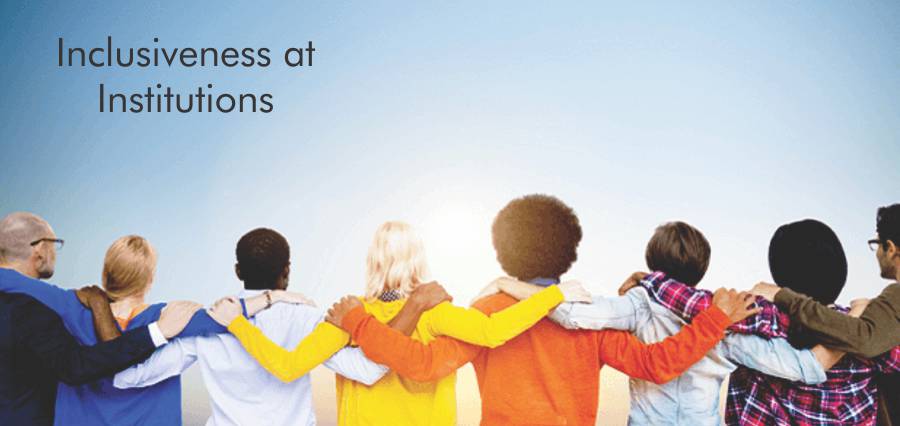Promoting diversity in the educational environment has been the prime goal of the colleges and universities since decades. The global perspective allows the universities to view culturally and linguistically diverse students along with their parents and guardians. Diversity emphasizes on the marginalization of race, class, culture, language, and gender orientation. Many discussions have had occurred on the significance of diversity and recognizing the difference. But it is equally important to move to the next step; integrating specific guidelines to address the difference and how they can get worked out. Students across the world have been speaking on the issues like racial injustice and gender violence. The faculties, campus administrators, and even students have been struggling to figure out the process to reduce marginalization and to create a friendly environment that accepts students from all backgrounds. Therefore, it has become mandatory to have a great approach to teaching and to learn to cope with various style of learning.
Alike the earlier days, professors are being challenged to make their set of teaching strategies wider to meet the expectations of students from the various diverse background. The way of teaching the younger generation exerts a powerful influence on their linguistic, social, and general educational development. There are some rock-solid principles aimed to foster inclusion of diverse students and positive cross-group relationships. These are the key point which assists educational institutions in creating an un-biased environment in the college or university campus.
Develop Optimal Conditions to Reduce Unfairness
An inclusive community requires dealing with the anxiety of students regarding their culture, color, gender and language encounters. These anxieties complicate the student interactions. Therefore, a considerable amount of researchers suggest that communication between people of different races and ethnicities can reduce prejudice. Hence, it is important to have the support of relevant authorities, who share a common goal, and a sense of cooperation.
Foster Mindfulness
Mindfulness is a process of being non-judgmental, entire awareness of thoughts, feelings and the surrounding environment. An educational survey suggests that ‘mindfulness’ helps to mitigate fears and anxieties, along with encouraging greater awareness of ones’ self.
Practice Quality Listening
The skills of active listening are practiced to experience the way of empathy, and imagination to enter into another person’s frame of mind. This way of listening can promote the closeness and positive feeling towards others and also helps in reducing anxiety by moderating group membership. In this way, students can recognize their peers’ individual characteristics and group identities.
The Equilibrium between Acceptance and Change
Everyone tries to maintain a balance between acceptance and change in themselves and others. An individual must accept the change in the environment instead of judging and trying to change others. By keeping equilibrium, one can recognize the responsibility of creating solutions to the dilemmas one has confronted.
Nurture the Compassion
Researchers are consistently suggesting that people feel compassionate due to which they feel a personal connection. Therefore, the connection should be established among the concerns and sufferings of others through understanding and empathy. The students can explore the commonness among them which will create an unexpected connection. The practical approach of cultivating compassion includes common human values, and bridging communities.
Focus on Gratitude and Appreciation
The researchers have documented the social and psychological benefits of gratitude. The teaching faculty should bring the findings into the classroom by searching and seeing the good in ideas, people, and beliefs, and by acknowledging the ways they can positively impact onto the students’ lives.
One way to develop the skill of appreciation is through an exercise in which students are asked to express what they like about themselves as humans rather than their achievements. The universities should seek to develop unity among the diverse people in the group, each contributing their unique abilities, neglecting comparison and competition.
Teachers should promote critical thinking when they make rules for the classroom and enable students to compare and contrast them with other cultures. Students can develop different cultural skills in culturally and linguistically diverse classrooms. The classrooms can be more inclusive by implementing self-reflective quality and crafting the potential classroom scenarios.
Surely, a diverse classroom is an ideal laboratory to learn multiple perspectives of the global society. The students who learn to work and play along with their classmates from various cultures are better prepared to face the challenging world. The various exercises that deal with the diversity among students help them to cross the borders of unfairness and to reach a place of genuine understanding and connection. In order to bring equity at educational institutions, all universities should commit to making progressive movements. By following these practices, the students will embrace their uniqueness and promote a sense of common humanity towards social justice that would bring harmony, and build a strong and supportive environment at educational institutions. This initiative will make feel every student respected and valued at learning centers.









